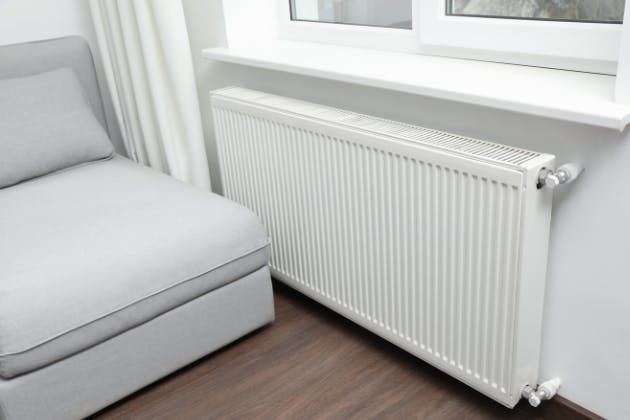Bleeding your radiator is one of those simple home maintenance jobs that can make a big difference to your comfort and heating efficiency. Over time, air can build up inside your radiators, stopping hot water from circulating properly. This often leads to cold spots, uneven heating, and wasted energy. Learning how to bleed your radiator can help you keep your home warm, reduce energy use, and save on heating bills.
The Right Way to Bleed a Radiator

Step 1: Switch Off Your Heating
Before you start, turn off your central heating system completely and allow all radiators to cool down. Working on hot radiators can be dangerous and may cause water to spray out under pressure when you open the valve. Cooling them down also ensures air bubbles rise to the top, making the bleeding process more effective.
Step 2: Find the Bleed Valve
Locate the bleed valve on your radiator. It’s a small, round metal part near the top corner, often with a square or slotted opening in the middle. You’ll need a radiator key (available at most DIY shops) or a flat-head screwdriver to open it. Place an old towel or small bowl underneath the valve to catch any drips or small spurts of water, this is completely normal when you start bleeding.
Step 3: Open the Valve Slowly
Insert your radiator key into the valve and turn it anti-clockwise slowly, no more than a quarter to half a turn. You’ll hear a hissing sound as trapped air escapes. Keep the valve open until water starts to come out in a steady stream rather than spurting or bubbling. That’s your sign that all the trapped air has been released. Quickly turn the valve clockwise to close it securely, but don’t over-tighten it.
Step 4: Check the Boiler Pressure
After you’ve finished bleeding all your radiators, it’s important to check your boiler’s pressure gauge. Bleeding can sometimes cause a small drop in pressure. If the reading has fallen below 1 bar, your system needs to be topped up. You can do this using the filling loop underneath your boiler, usually a small, flexible silver hose with two valves. Open both valves slowly until the pressure rises to around 1.5 bar, then close them again. Always refer to your boiler’s manual if you’re unsure.
Step 5: Turn the Heating Back On and Test
Once your boiler pressure is correct, turn your heating back on and give it 10–15 minutes to warm up. Go around each radiator to check that they’re heating evenly from top to bottom. If any still feel cold at the top, you may need to repeat the process once more. It’s also a good time to listen for unusual noises, gurgling, clanking, or knocking could indicate trapped air or debris in the system.
Step 6: Know When to Call a Professional
If you’re having to bleed your radiators often or notice issues like slow heating, constant pressure loss, or leaks, it could point to a larger issue within your heating system. A qualified heating engineer in Bournemouth, Poole, or Dorset can inspect your boiler, check for hidden faults, and carry out any necessary boiler repairs or maintenance.
Get in touch with Gold BoilerCare Ltd
Gold BoilerCare Ltd provides professional boiler maintenance and repairs in Bournemouth, Poole, and Dorset. Our friendly and qualified heating engineers are here to help you stay warm all year round. Call us today on 01202 944416 and we’ll be happy to help.
